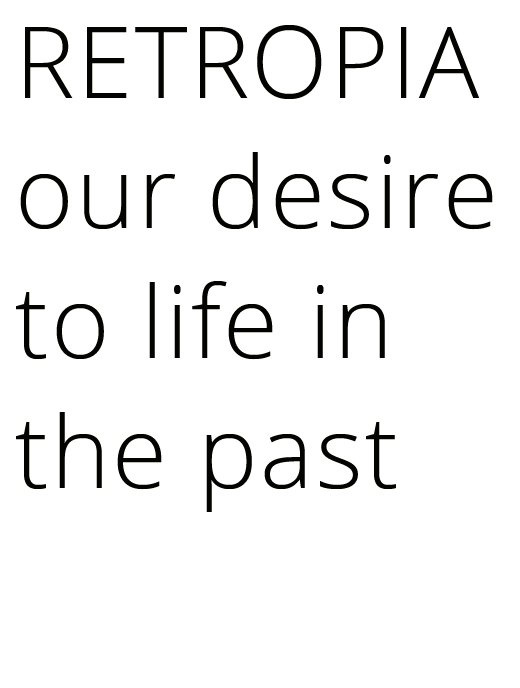Insecurities and anxieties of modernity in our increasingly violent world society lead many to give up on the effort of building a better future and turn towards the ‘retrotopia’ of an ideal past, a crucial sign of hope.[1]
Fascinated by all this nostalgia we see nowadays in fashion I started my research. An eclectic mix of styles and expressions keeping our nostalgic desires fed. But where does this desire come from? And why does this have an enormous commercial success? Fashion houses who celebrate nostalgia are making ground-breaking successes in the luxury industry.
The ideal past
Shortly after the death of renowned sociologist Zygmunt Bauman, his book Retropia was published. Since we have lost our faith that human beings can achieve happiness in the future, we have a desire to live in our ideal past, so called Retropia, by Bauman. Five centuries ago we lived in fixed places, had a sovereign state and we followed our leaders. Since we have lost our faith in utopias, the human aspiration has not died but is looking back to the old future.
Fear of epidemics, refugees (both economic and political), climate and digital revolution are driving us back to the past. Wasn’t it better in my childhood? Don’t forget in which kind of luxury we live. Our wealth has never been so good as it was. When you have something, or when you have more than you had, the fear of losing it gets bigger.
The new vintage
Living in a society of constant change this insecurity drives us back to the ideal past. Wasn’t it better in the ’70s, ’80s or ’90s? The new idea of romanticizing the past gives us hope and confidence. This expresses itself in design and fashion.
Vintage furniture has never been so high priced. Fashion houses as The Row present their luxury basic style in combination with vintage furniture pieces. Sacai curates and blend old furniture pieces as a stage for her fashion.[2]
Recreating the past
Driven from both circular and vintage ideals brands like Gregg Lauren, Atelier Reservé [3] and many more are examples of niche brands exploring the new growing business.
Waste no more [4] from the basic fashion guru Eileen Fisher even goes a step further. Her new business model is getting old collection back, re-collectioning them and selling it. When garments are damaged young designers cut out the damaged parts and re-create new items. For items that are not fixable, they create beautiful installations. Also think of Dutch designer Piet Hein Eek who, already for years, has been using circular sources to make furniture pieces.
The recognizable and honest aging is answering our need to have a ground of being, this can be seen as the economic success of those brands.
I can keep on researching this subject and how longer I am researching this all the more examples keep appearing. I am curious to know what are your retropia examples you have found or detected lately.
Enjoy the future.
Tjarda Wessels
11 maart 2020
[1] Review of Zygmunt Bauman, Retrotopia | https://www.theoryculturesociety.org/review-zygmunt-bauman-retrotopia/
[2] Dover Street Market| https://london.doverstreetmarket.com/floorguide/second-floor
[3] Reserve boys| https://www.reserveboys.com/
[4] Waste no More| https://www.wastenomore.com/waste-no-more
[5] Retropia • Sprechen über Sehnsuchtsbilder vom Land | https://www.youtube.com/watch?v=eHuaziWM07I

